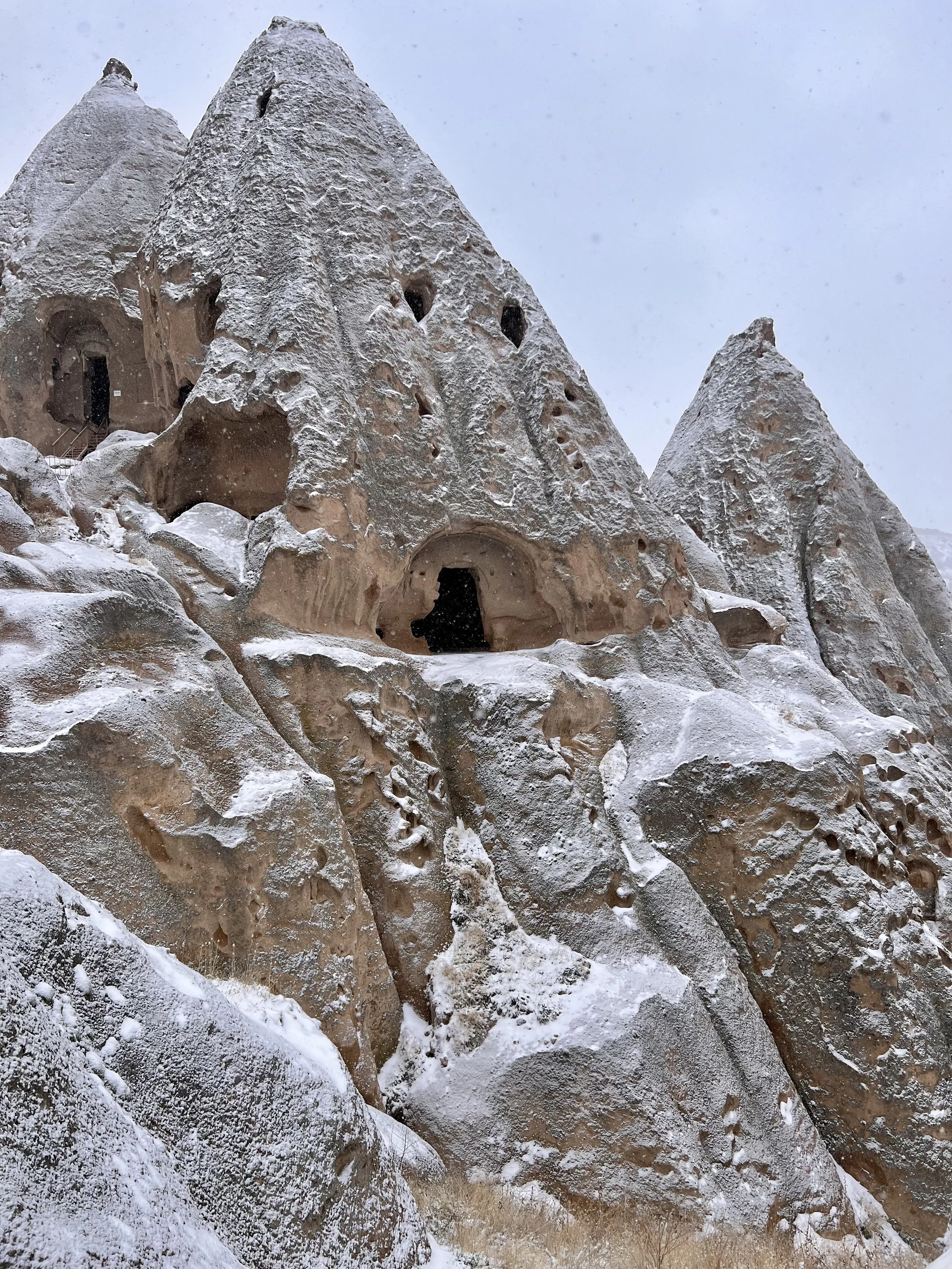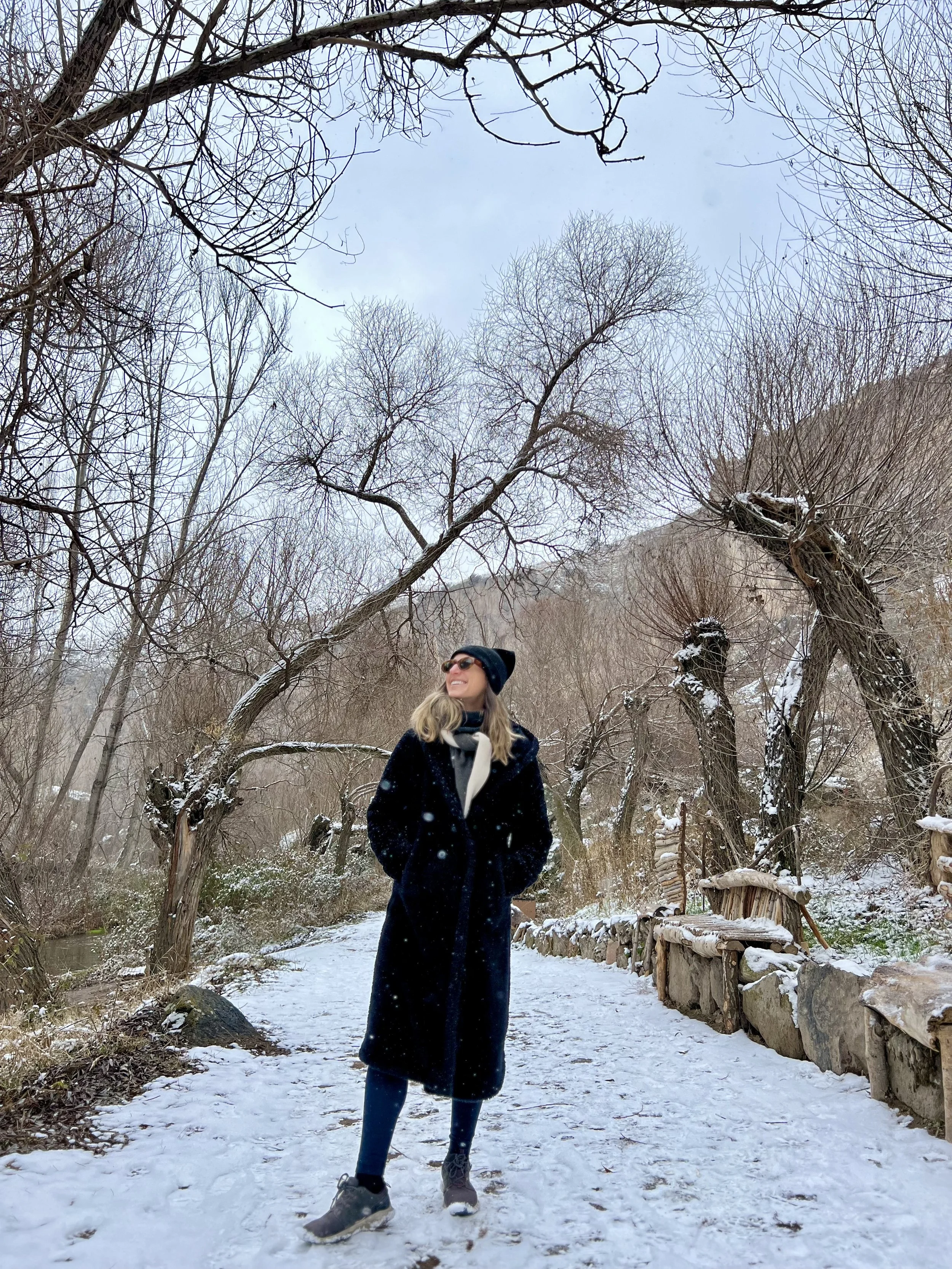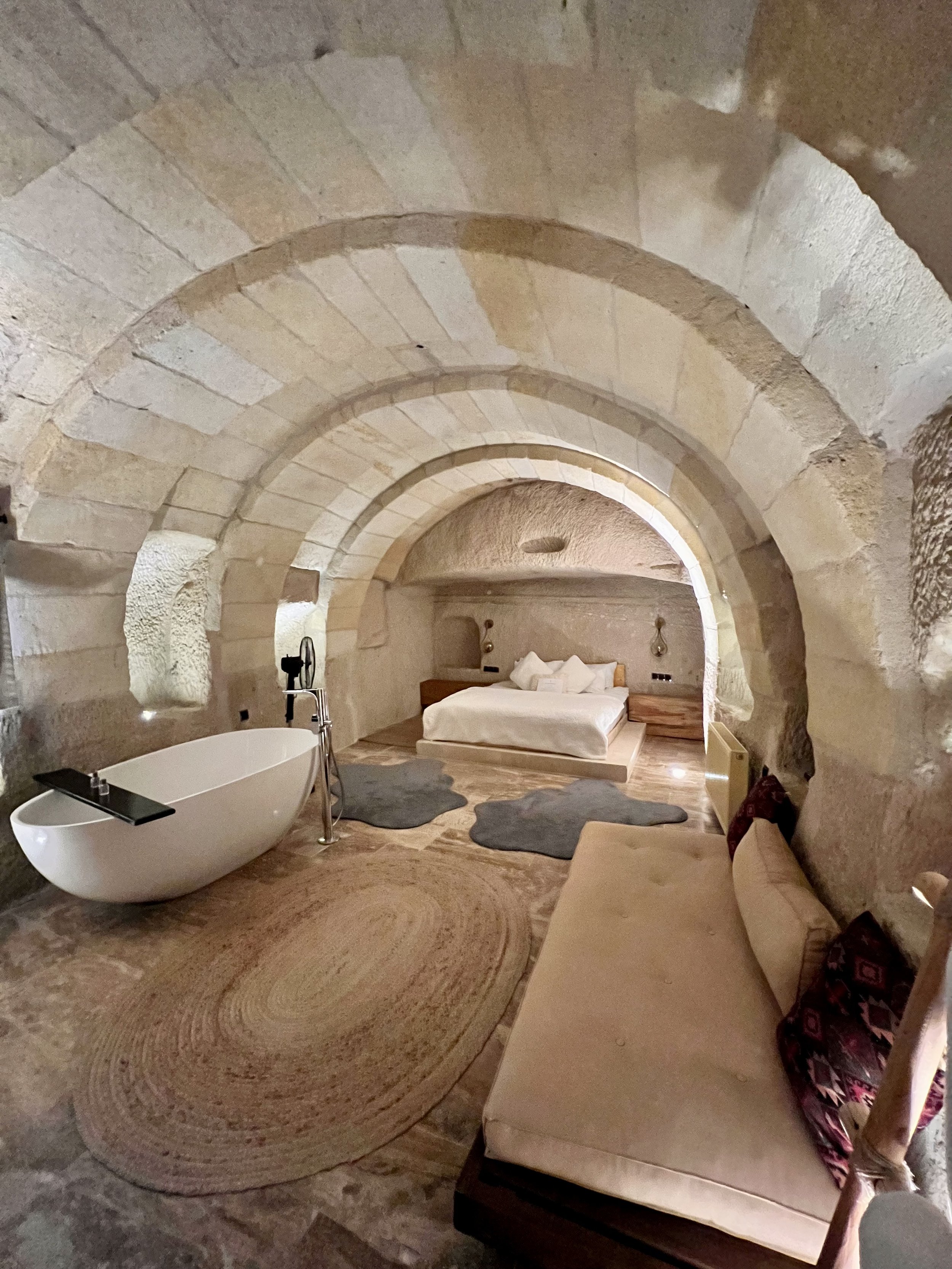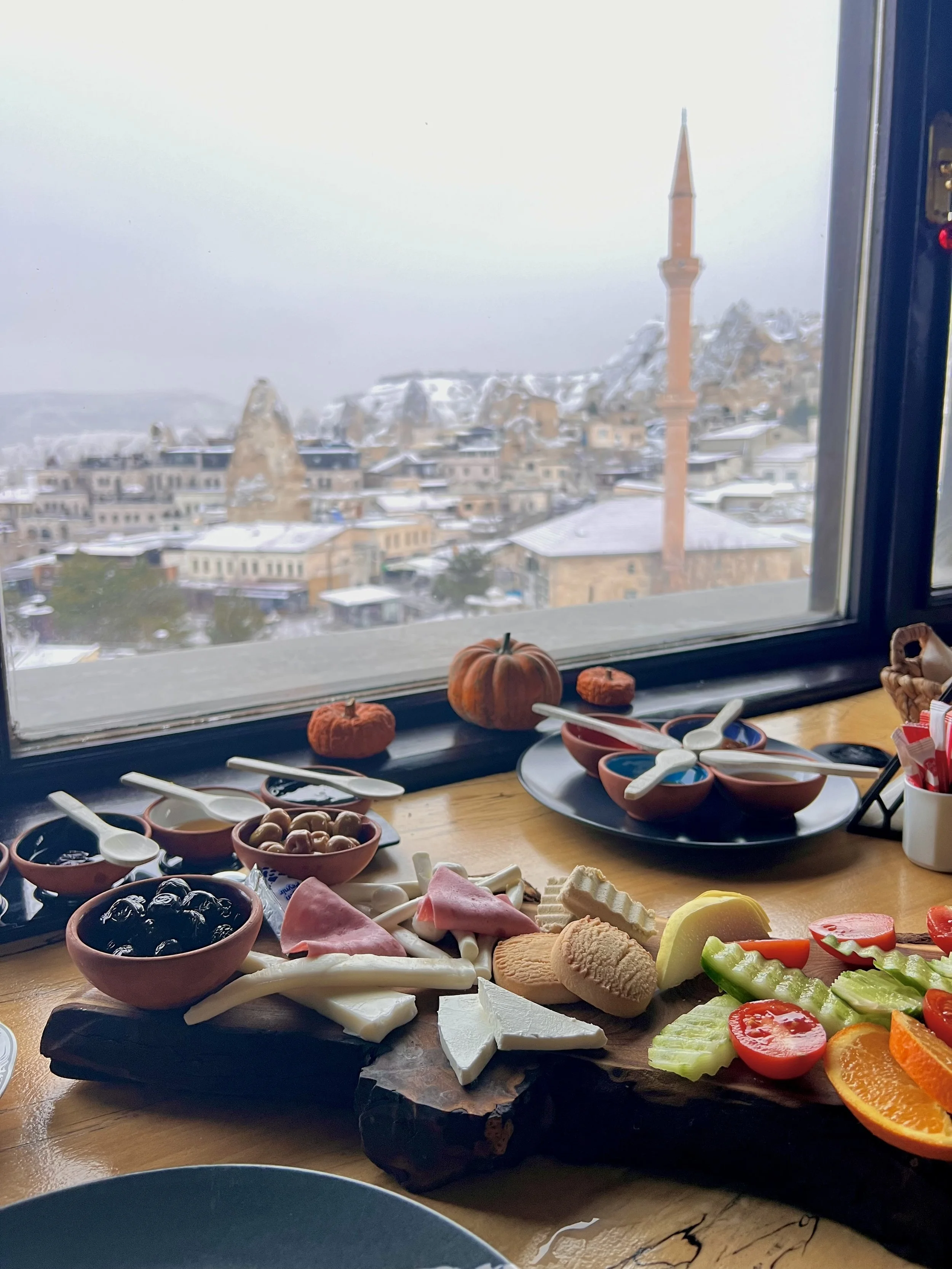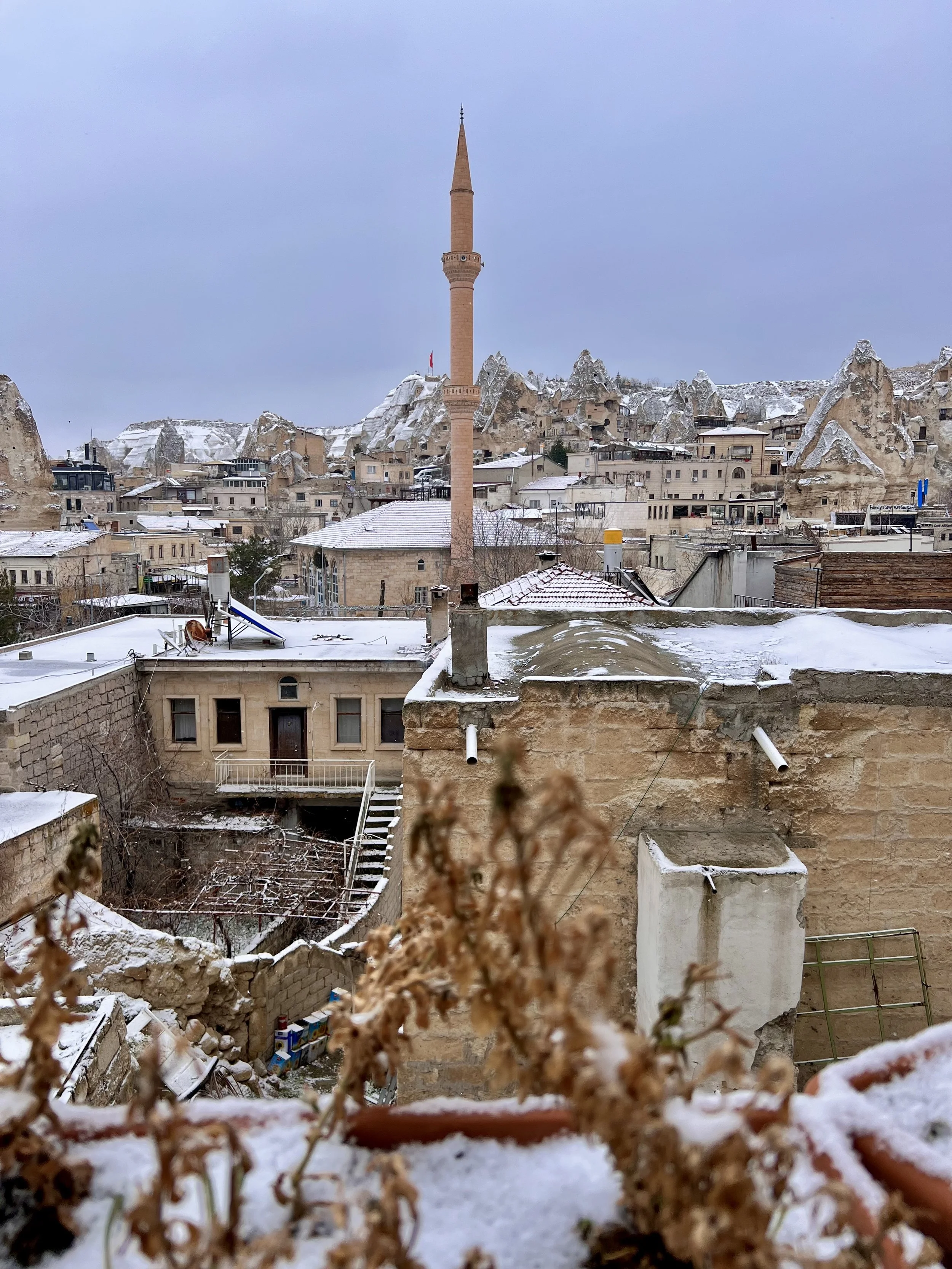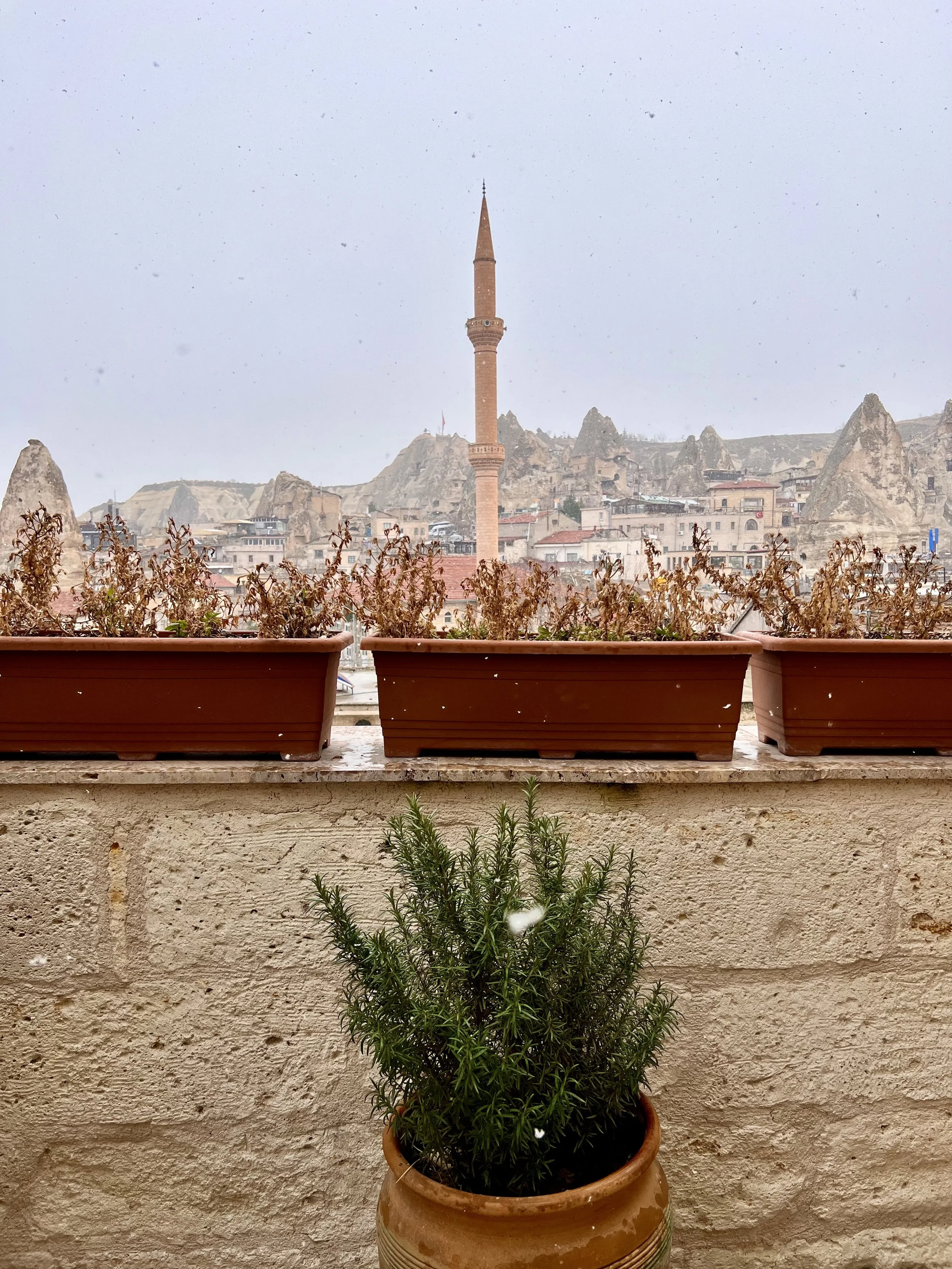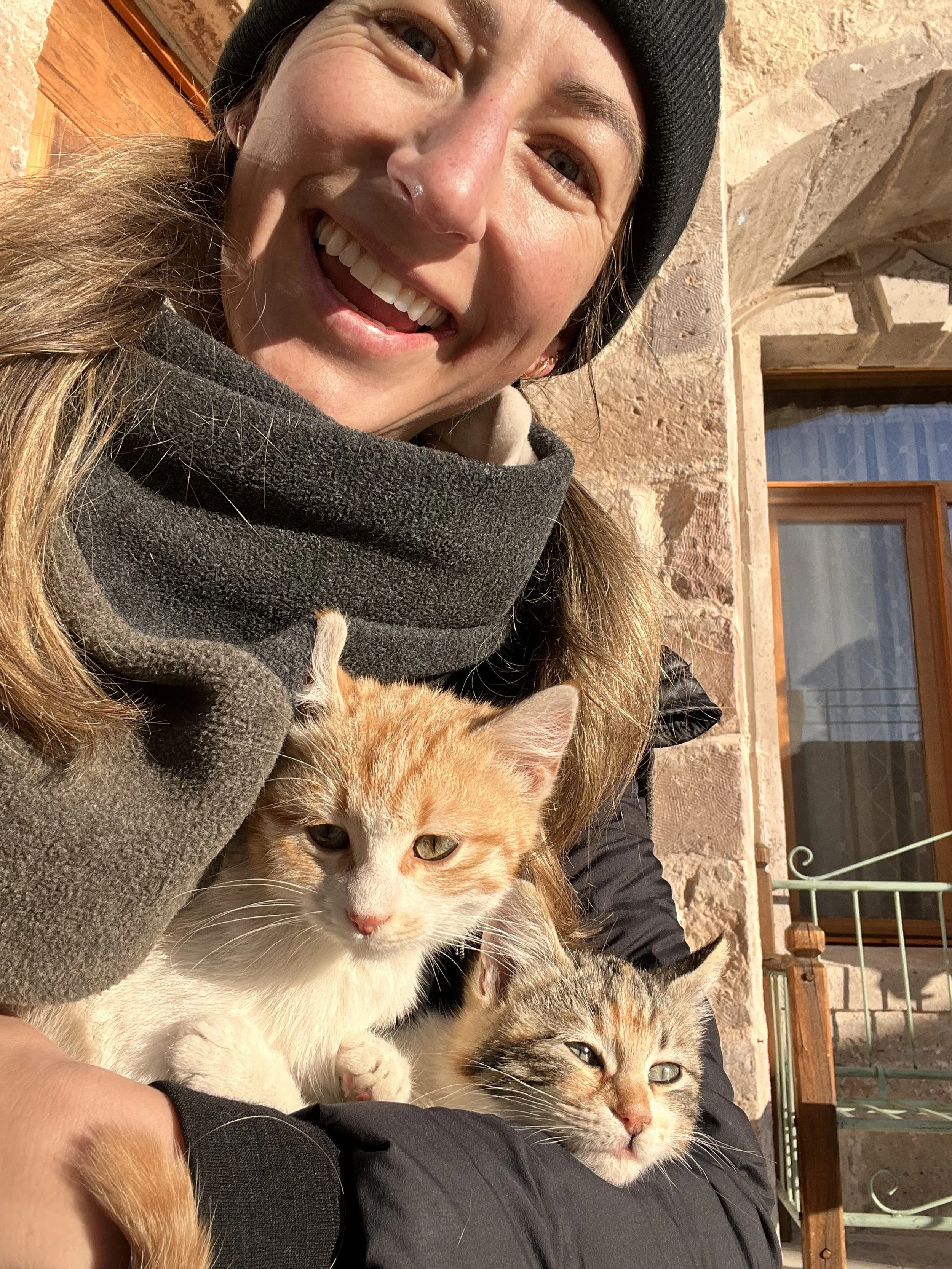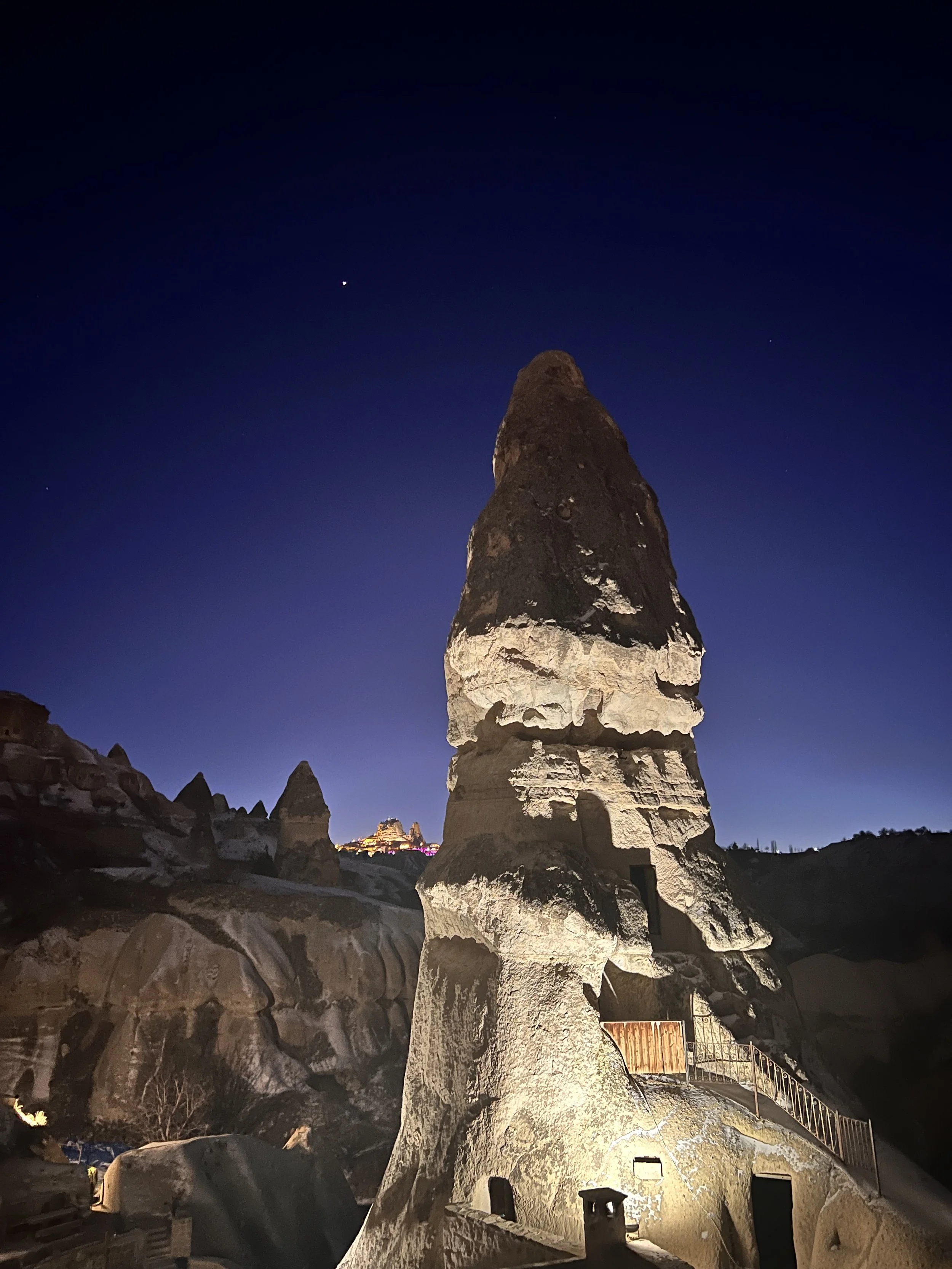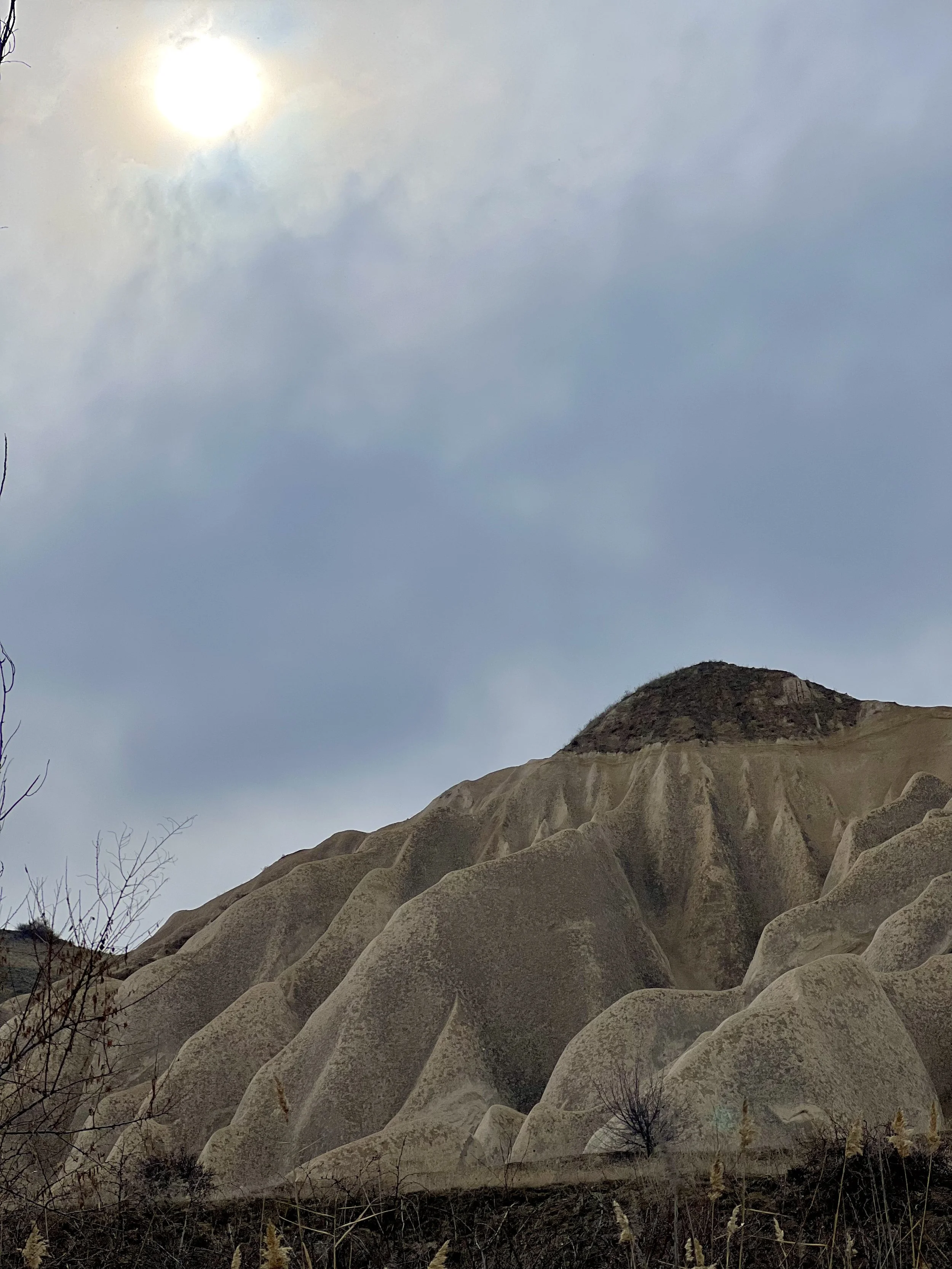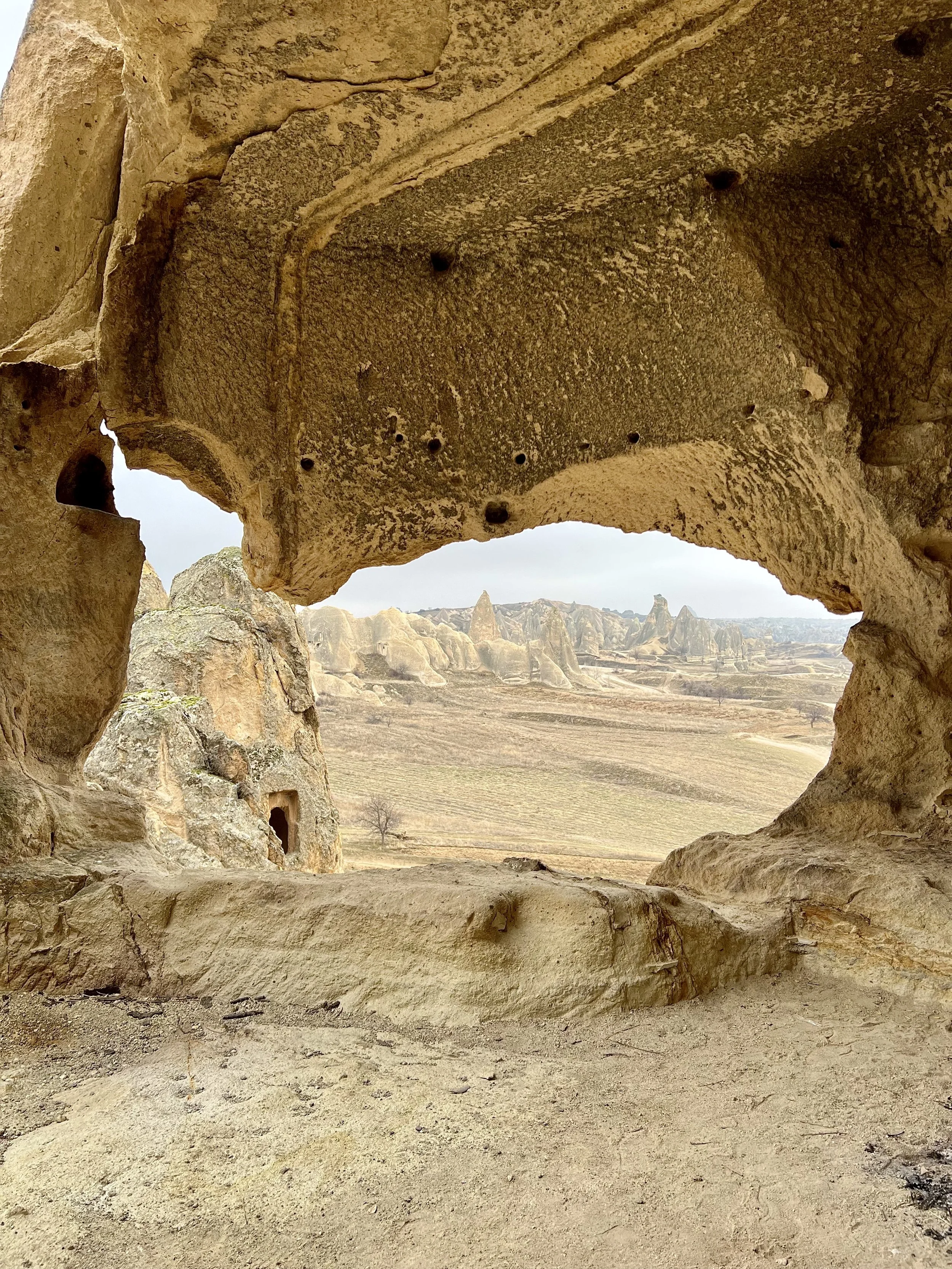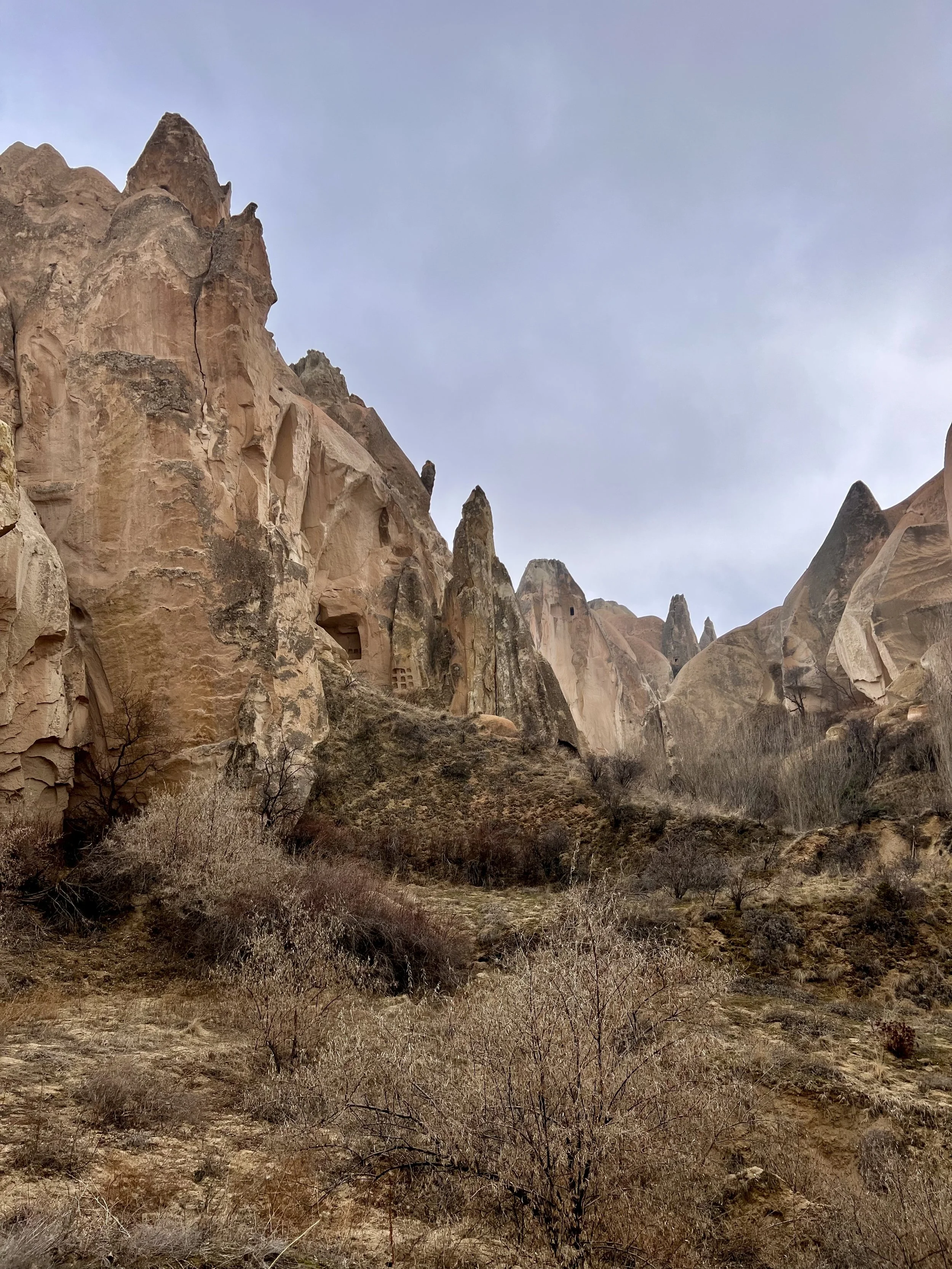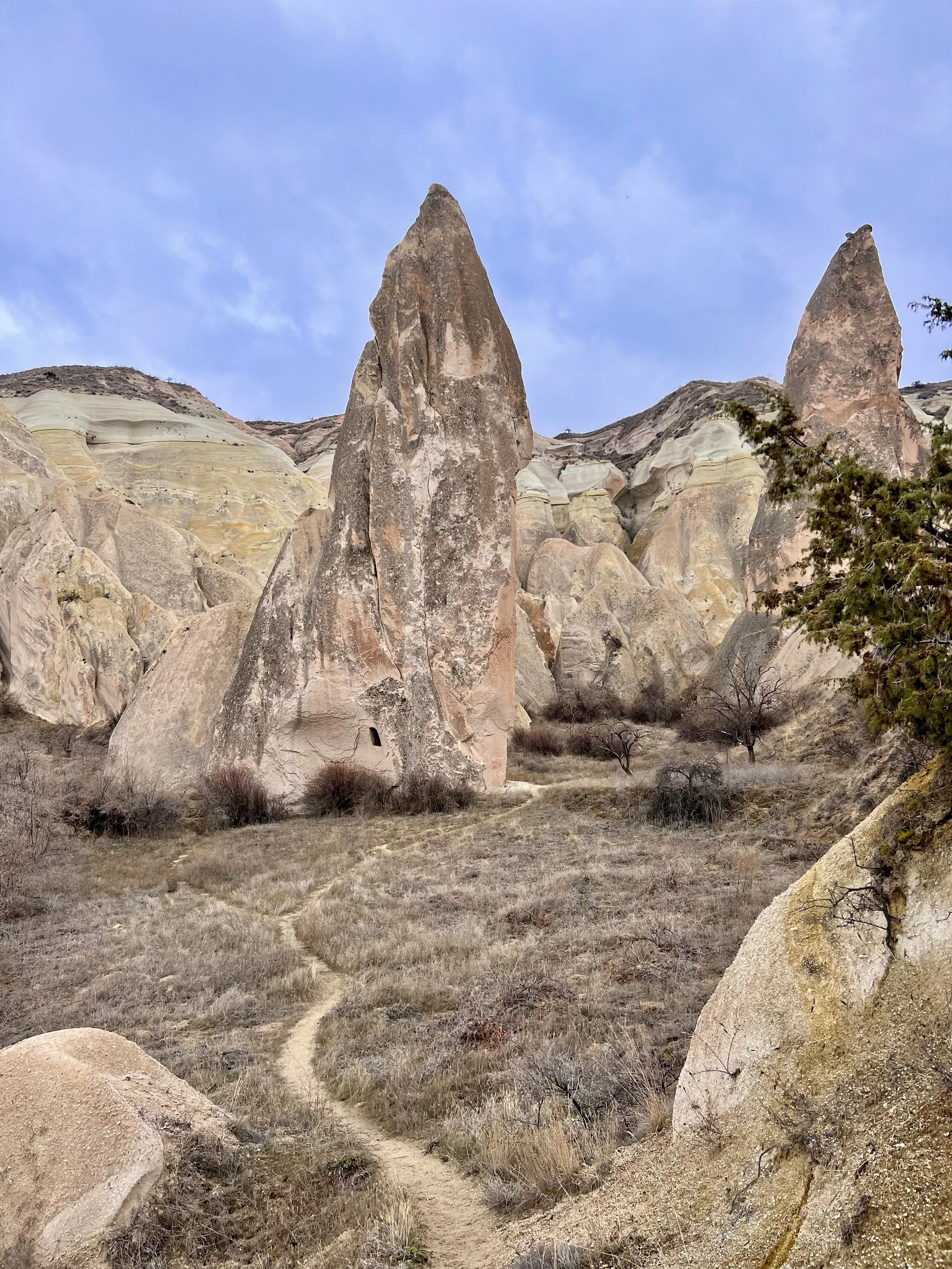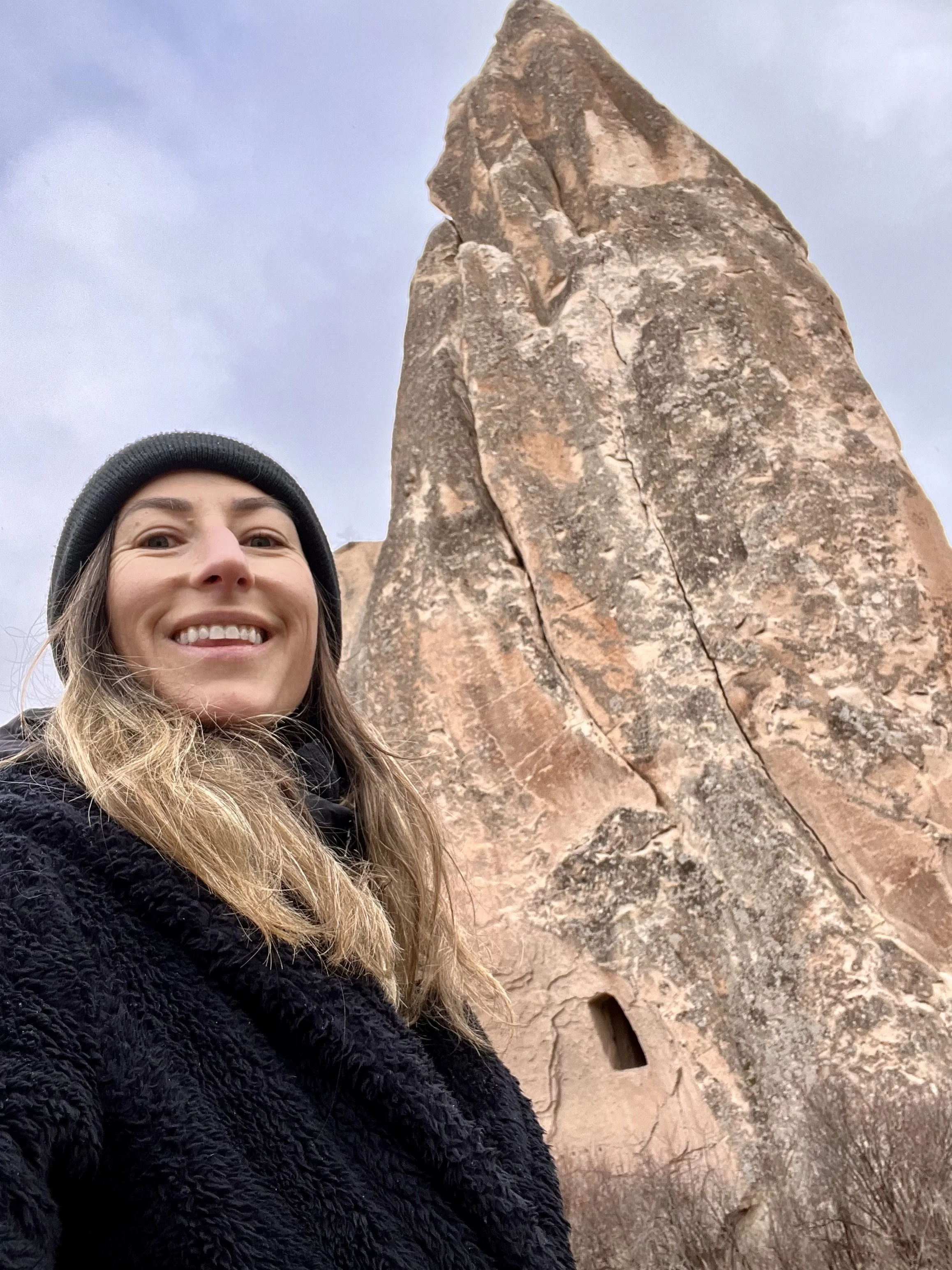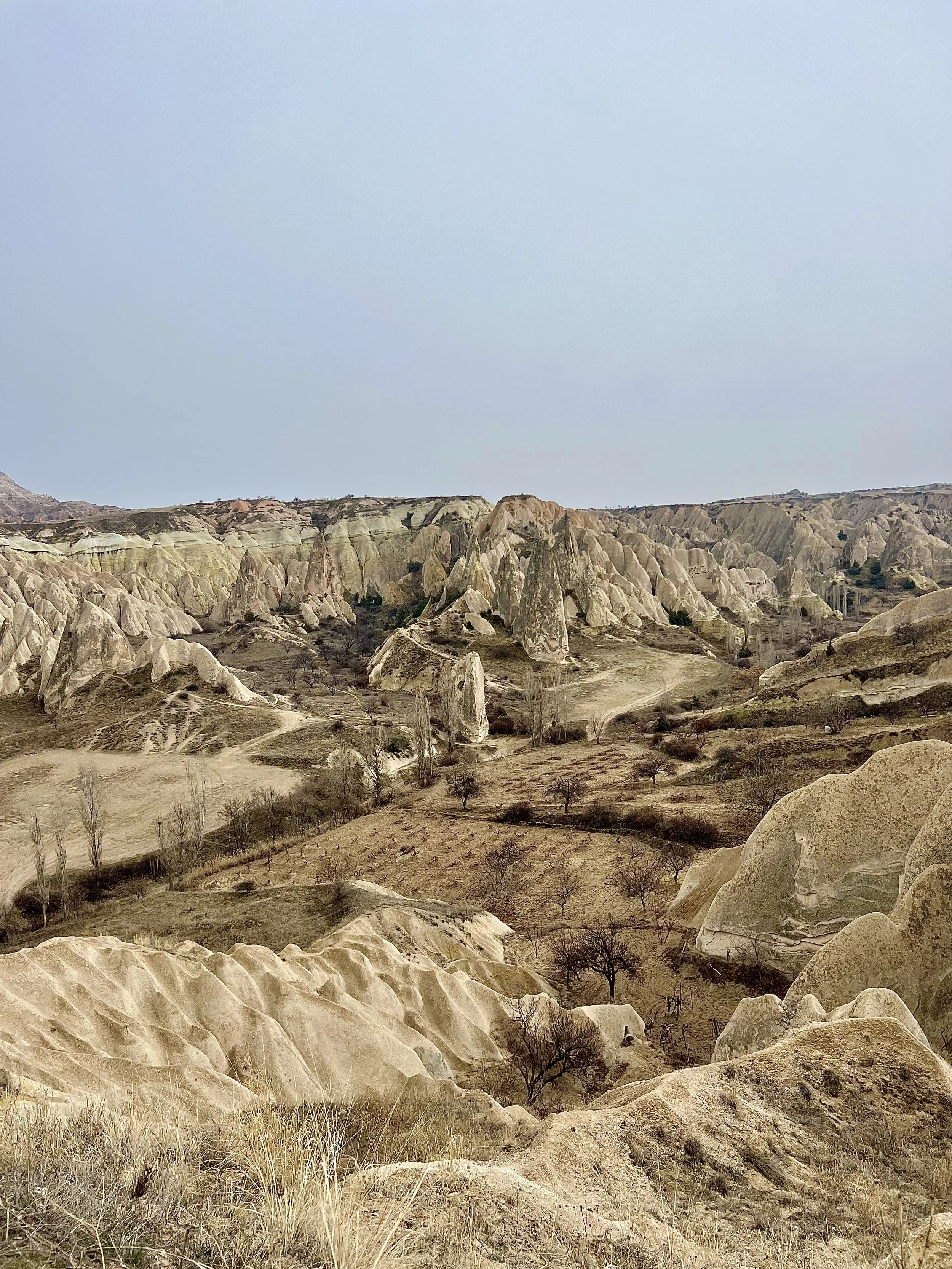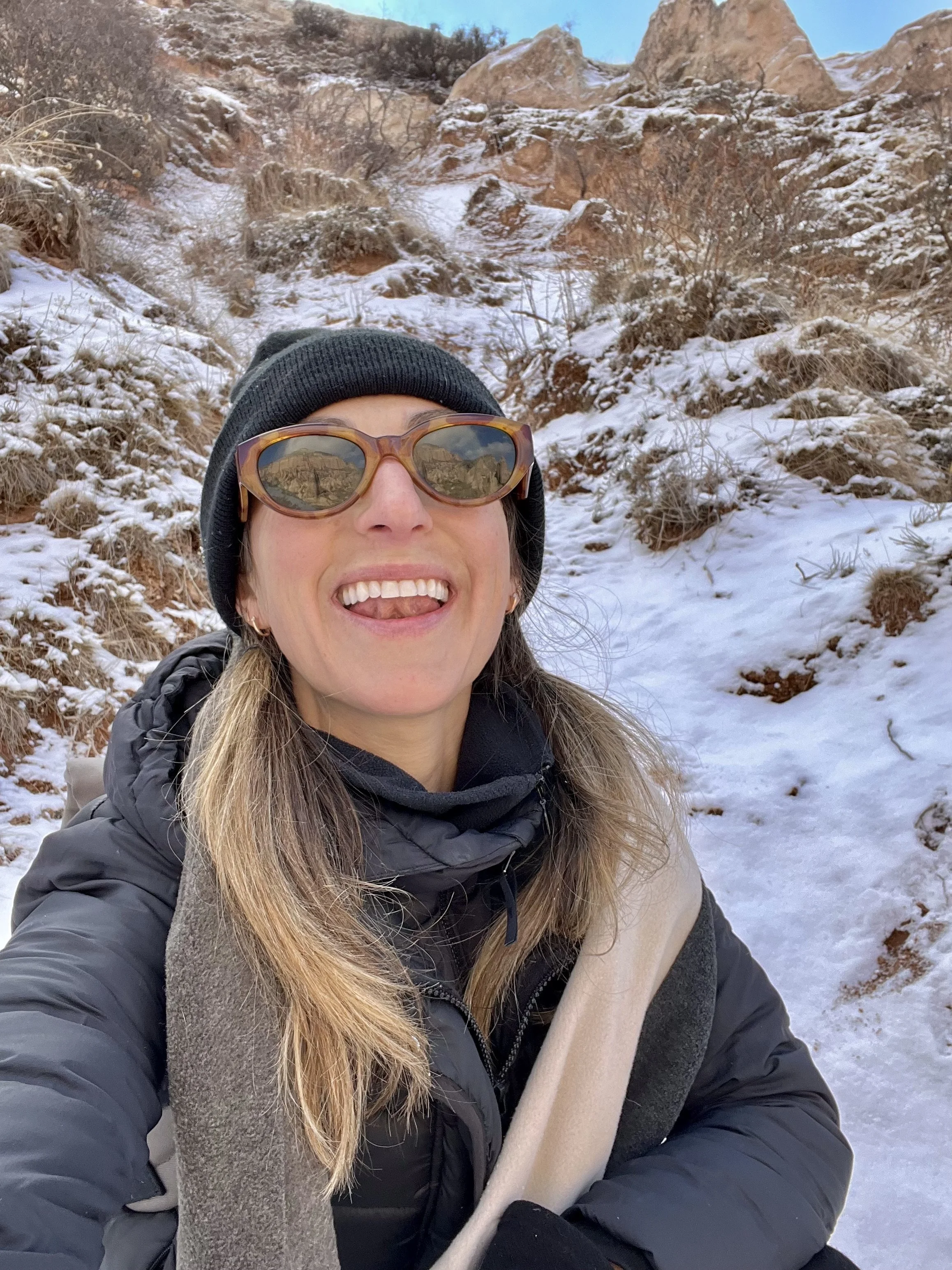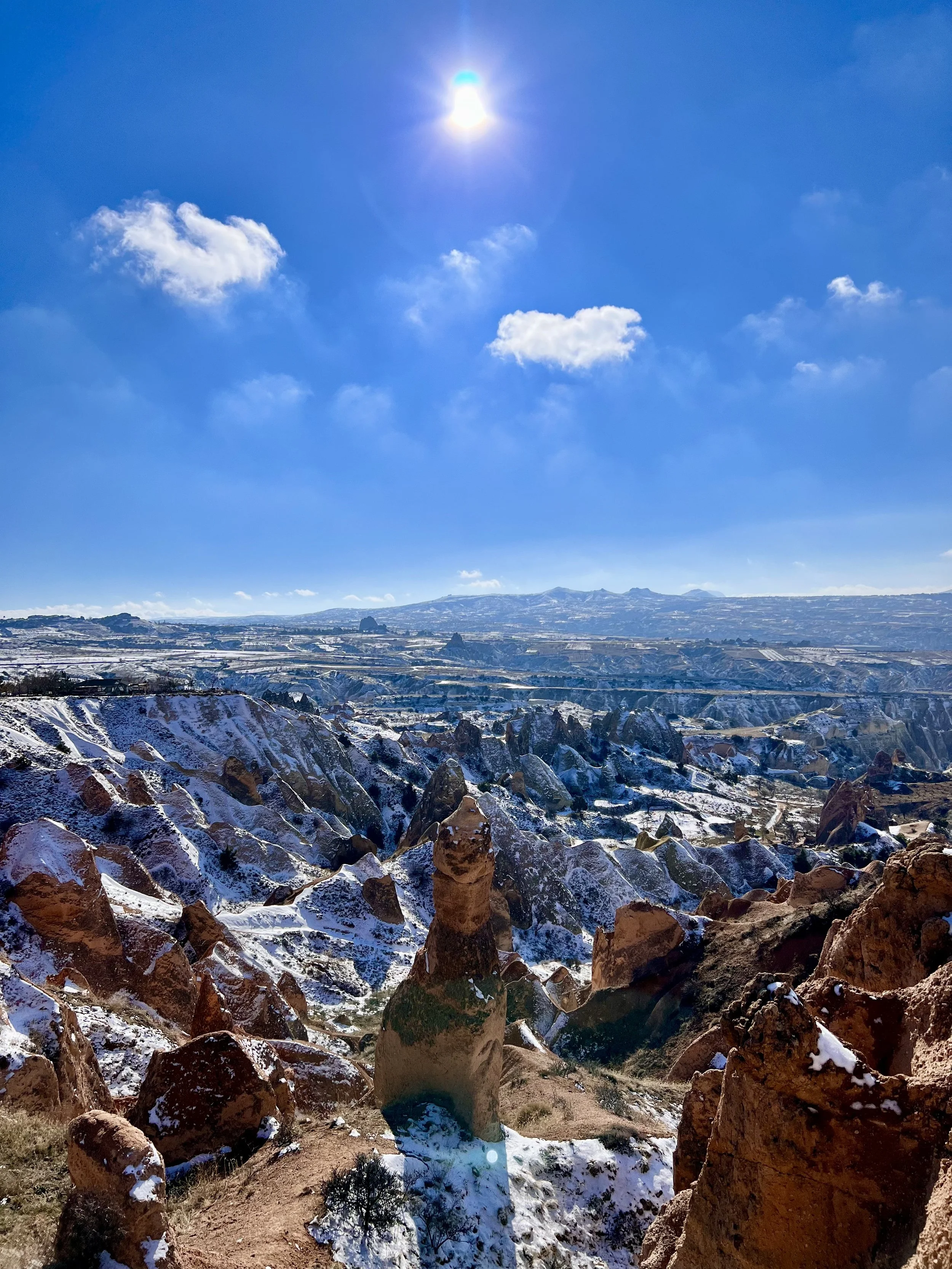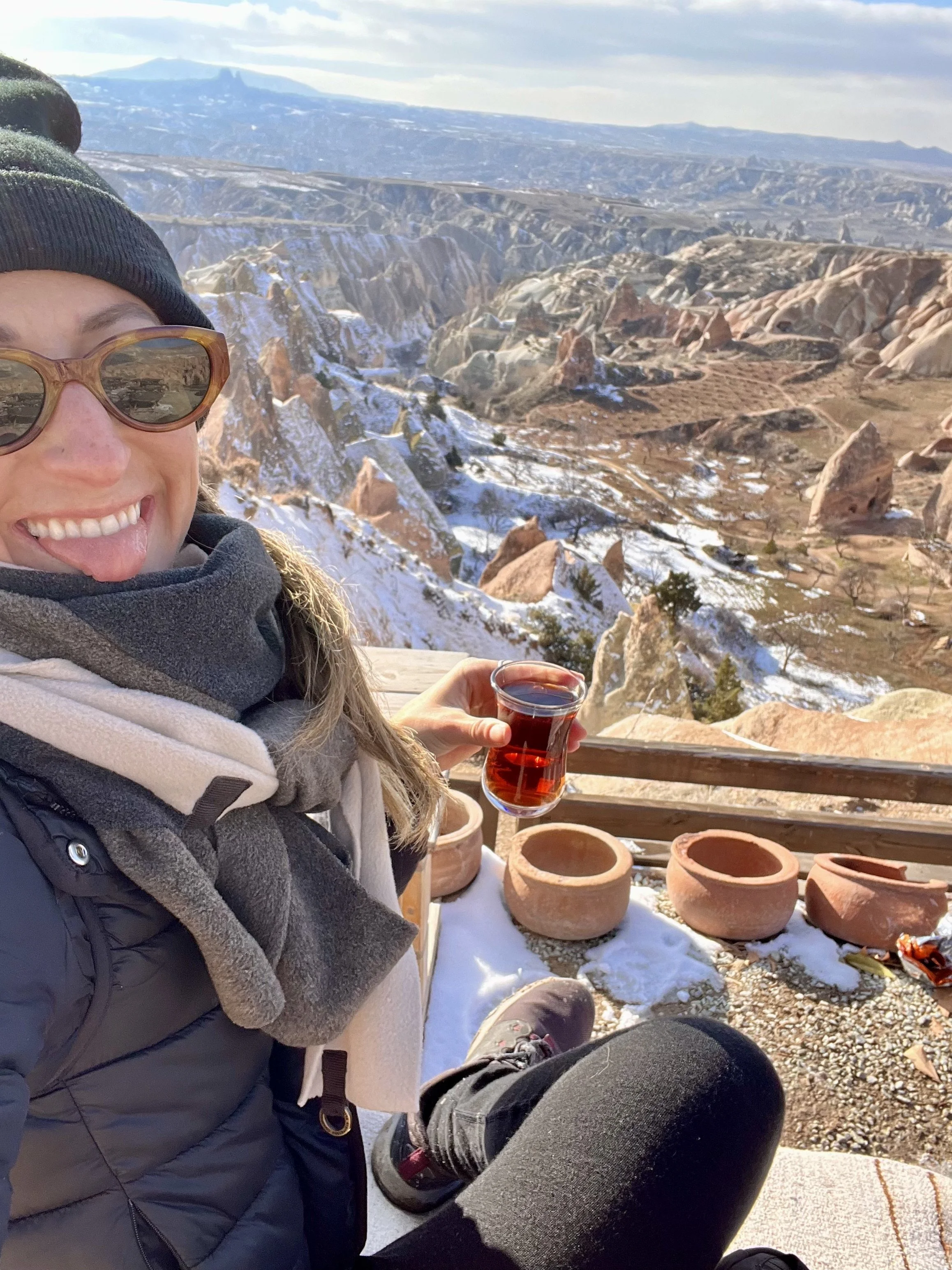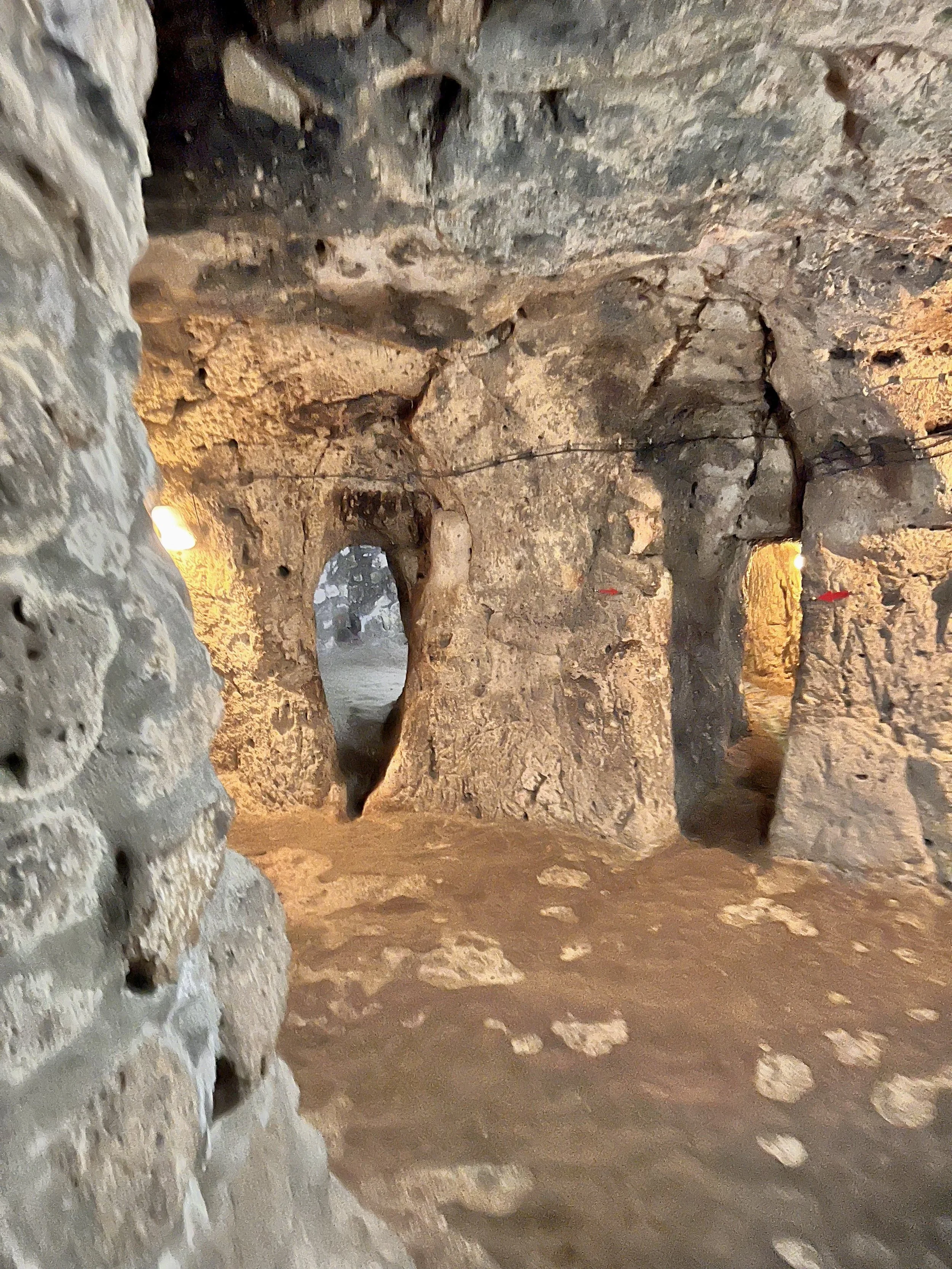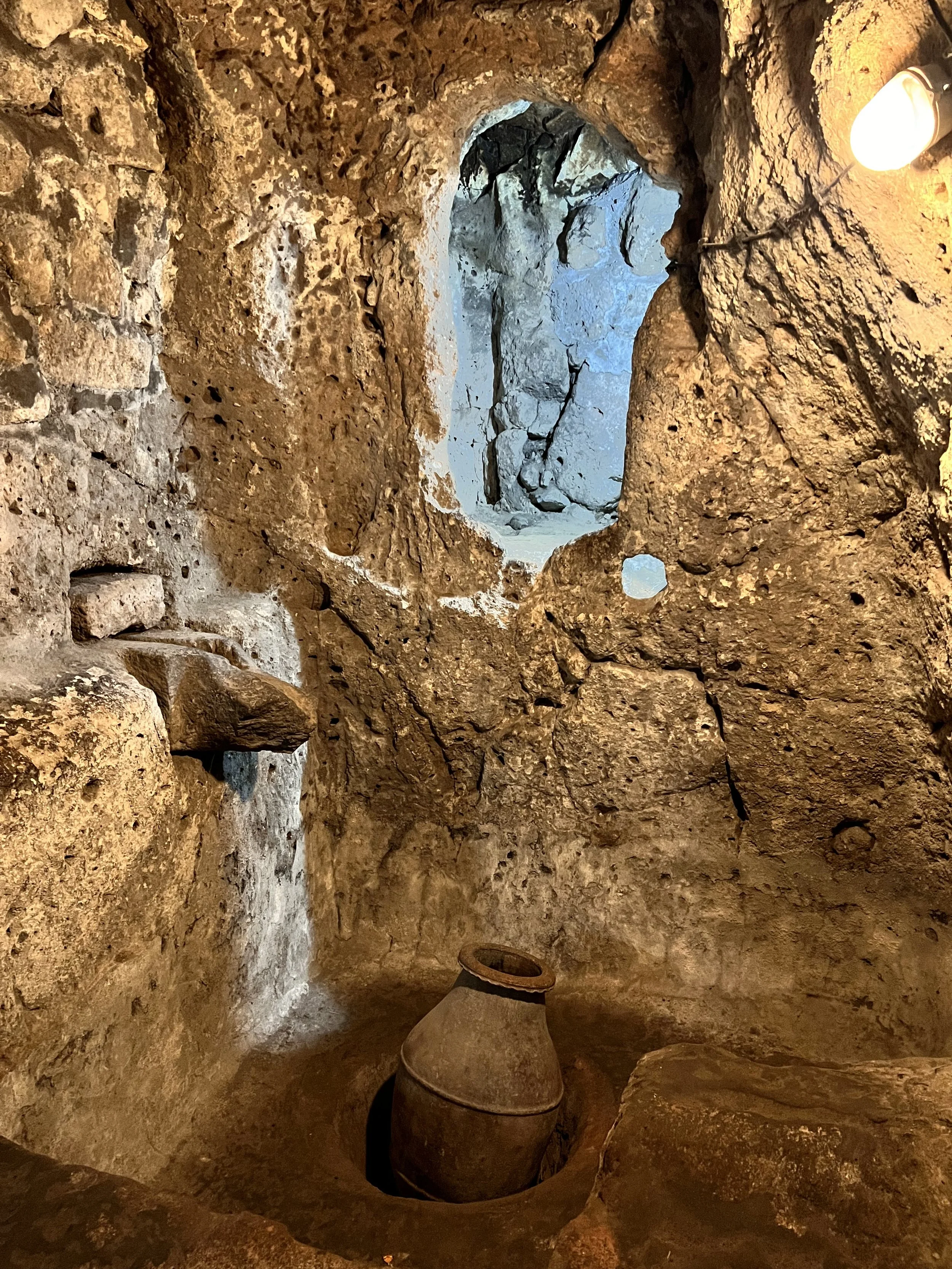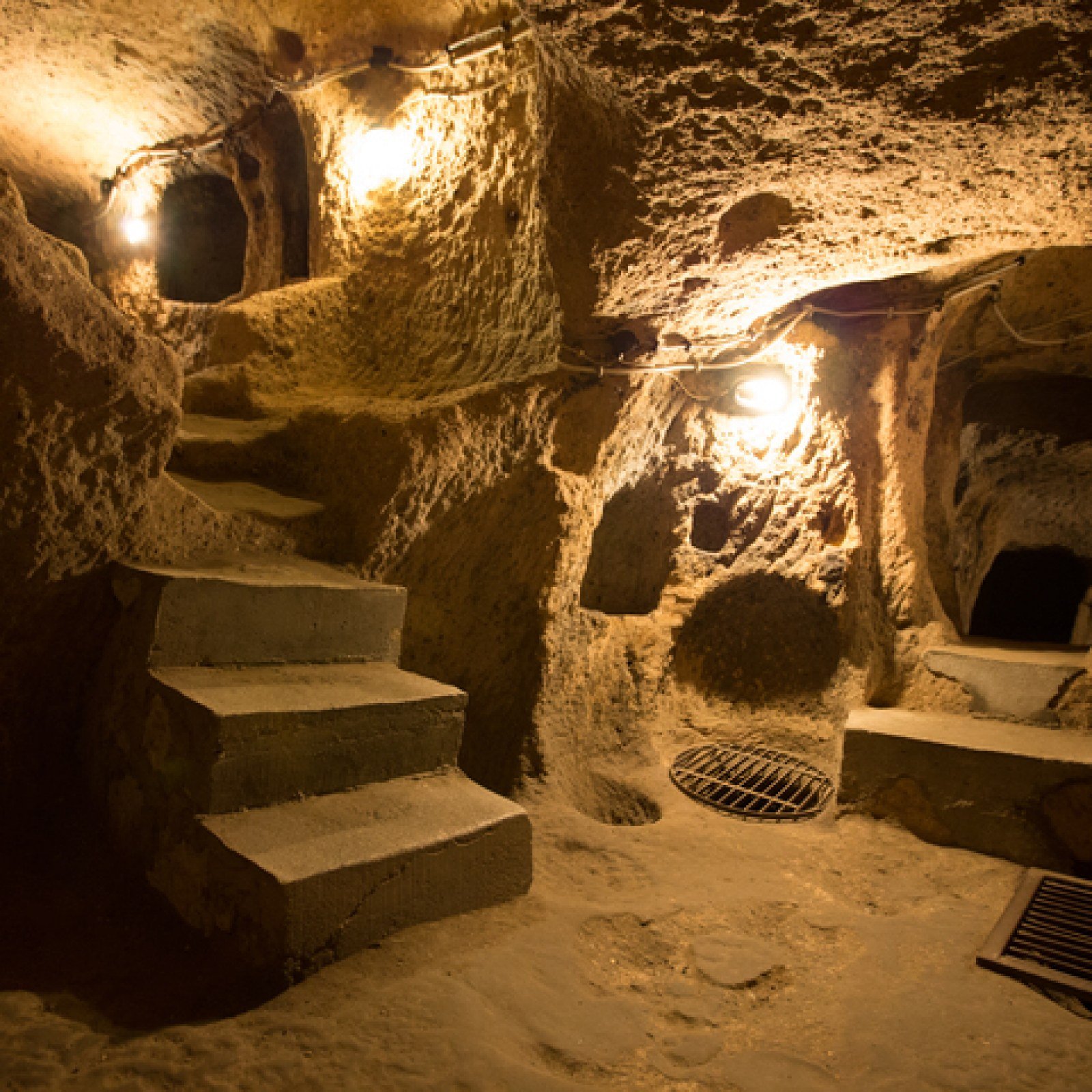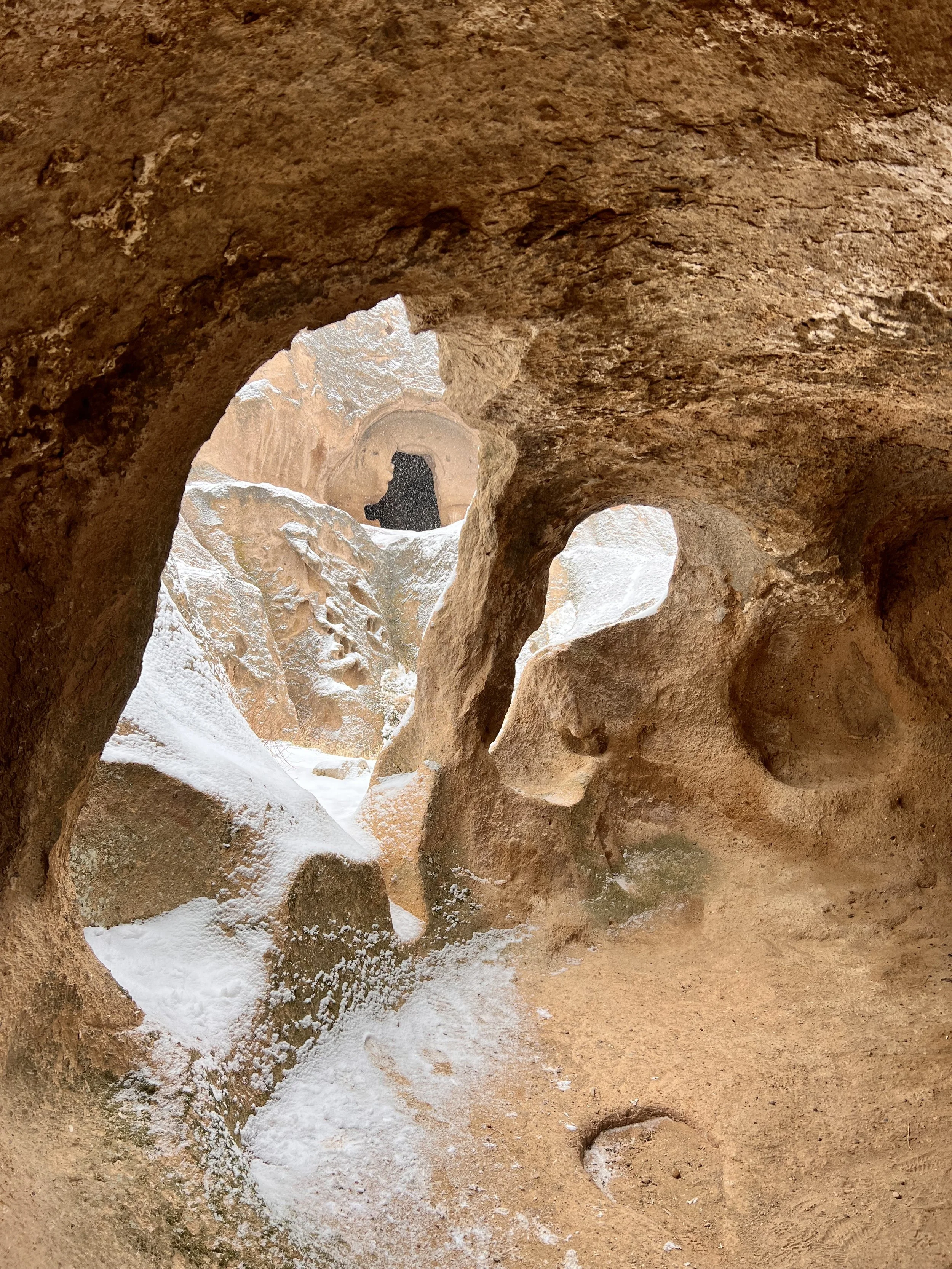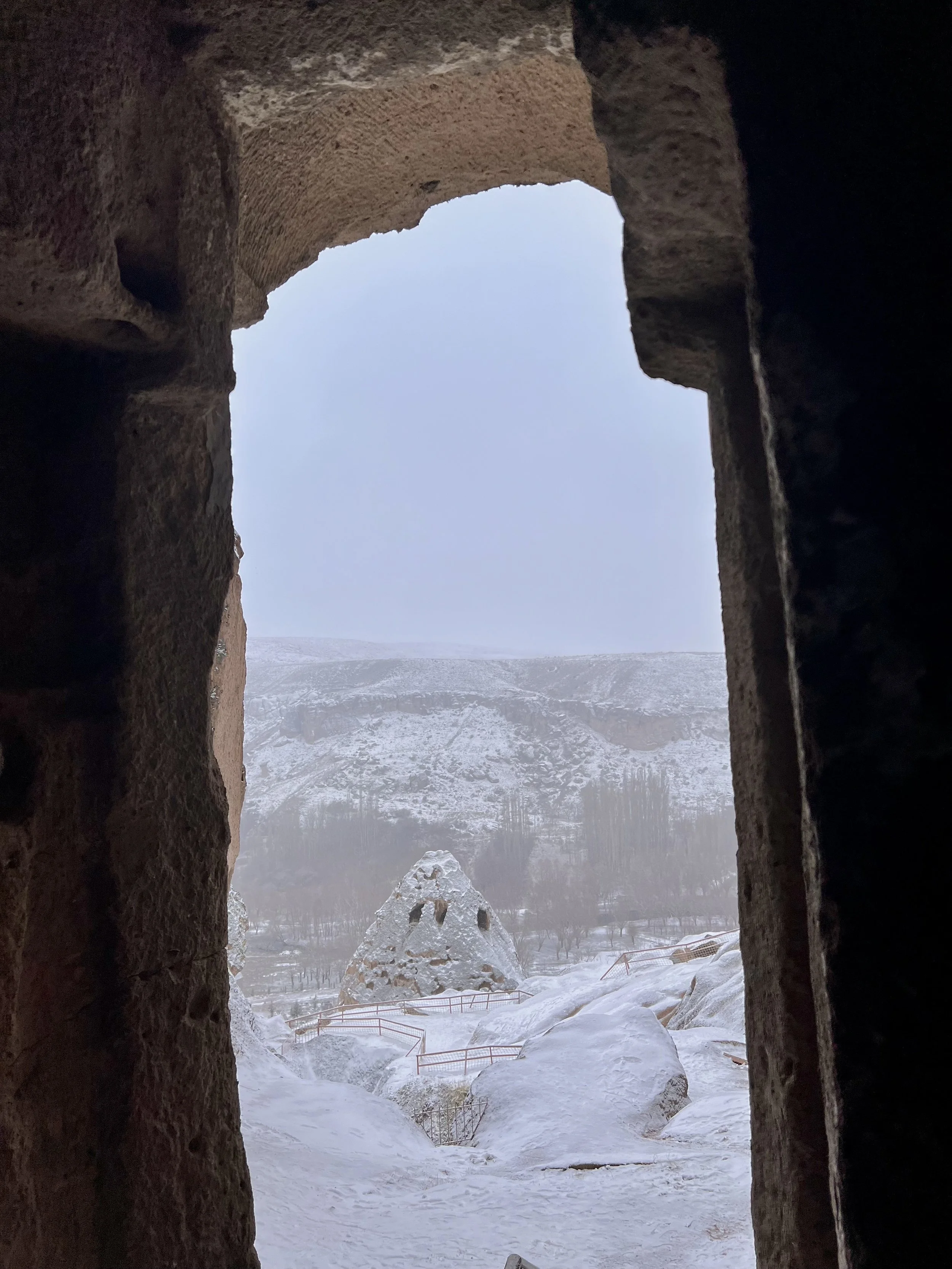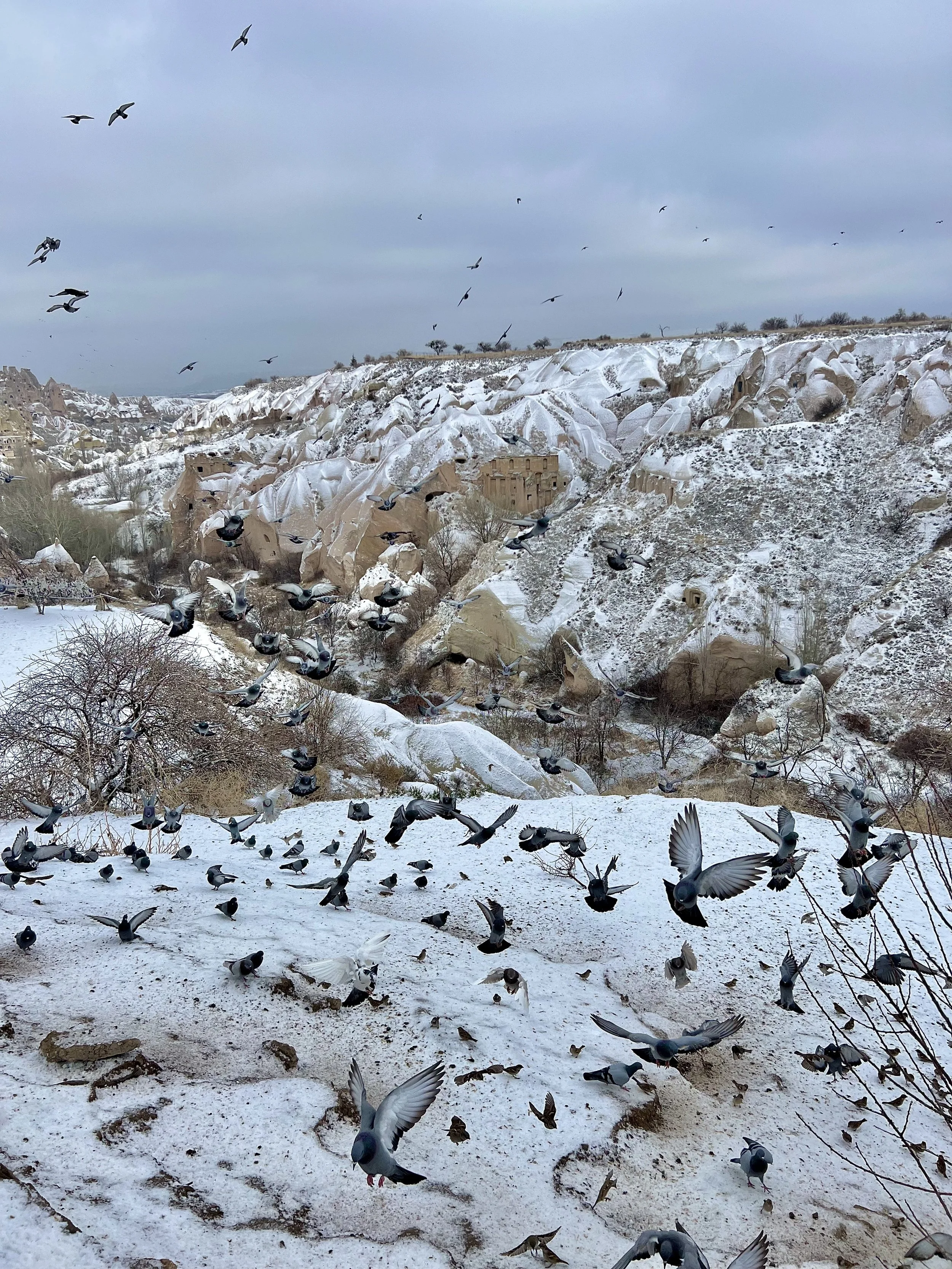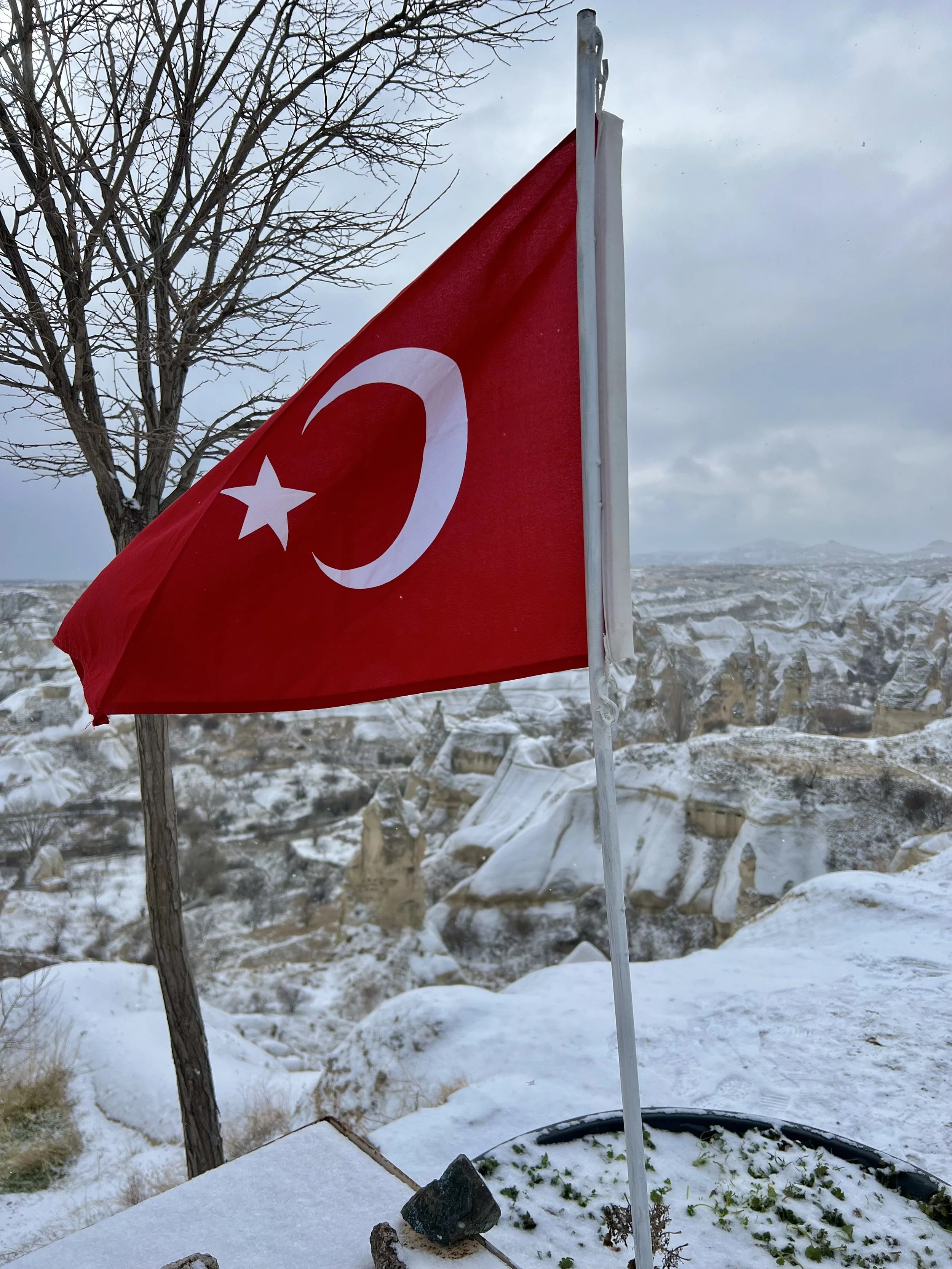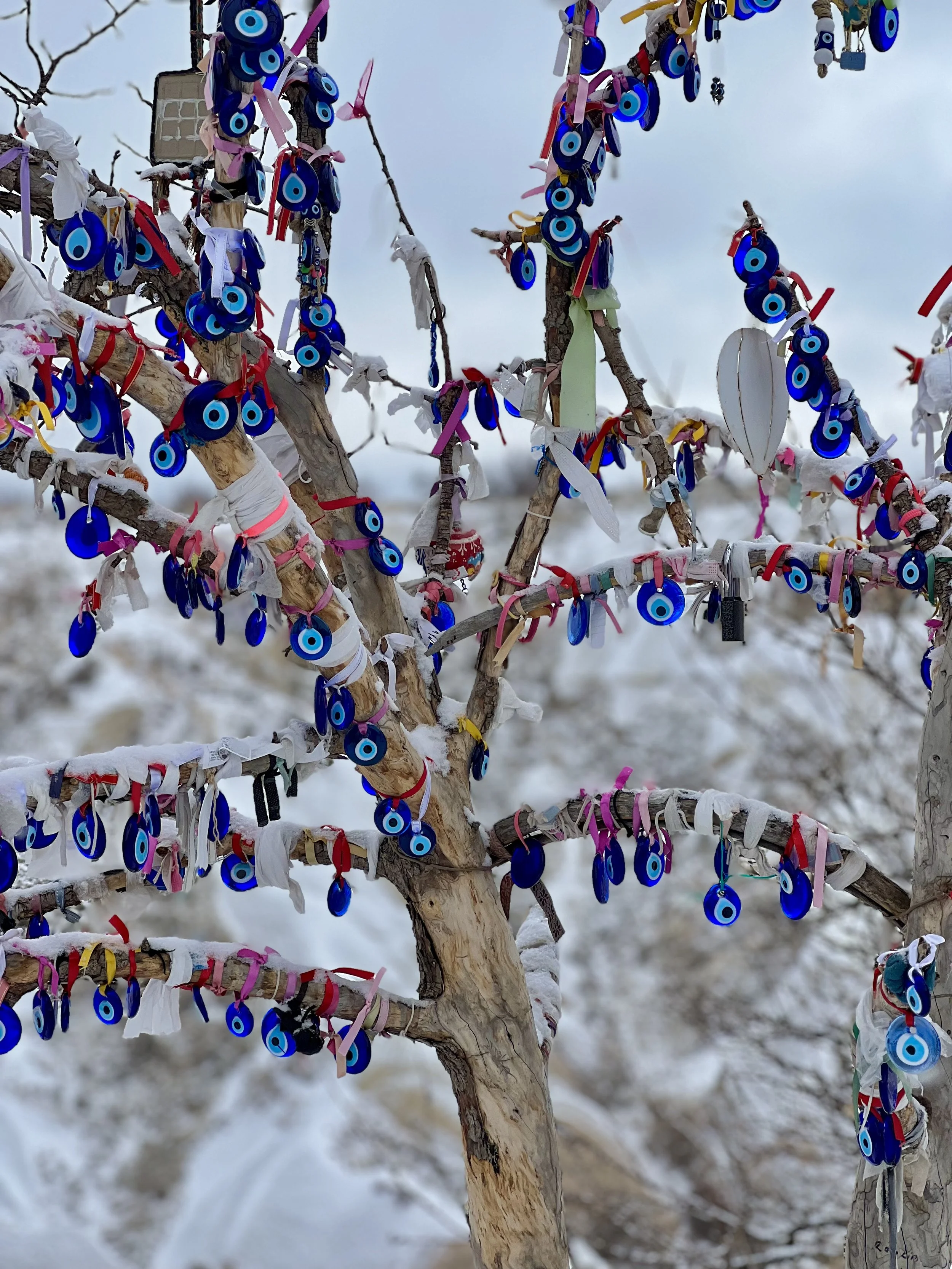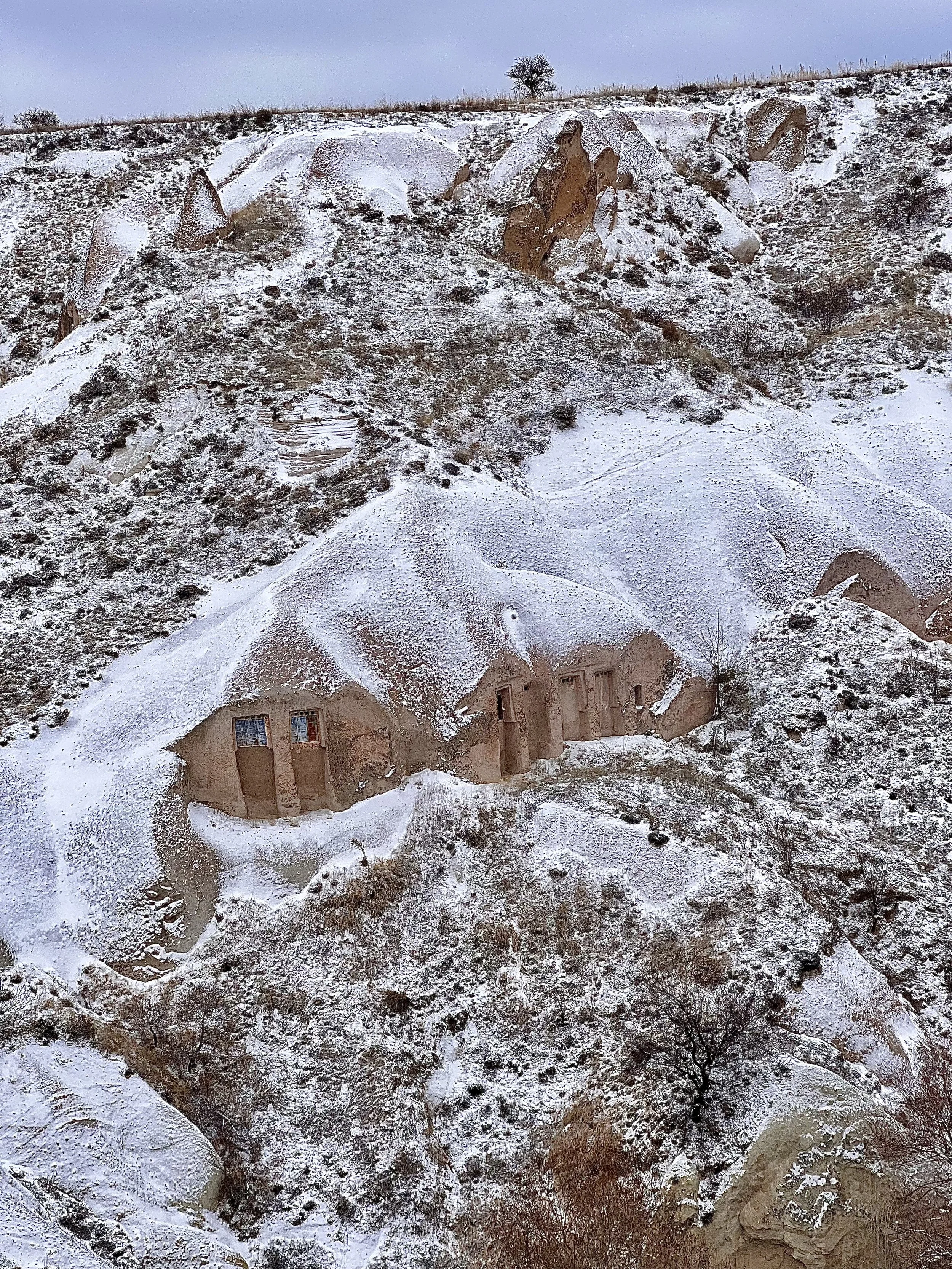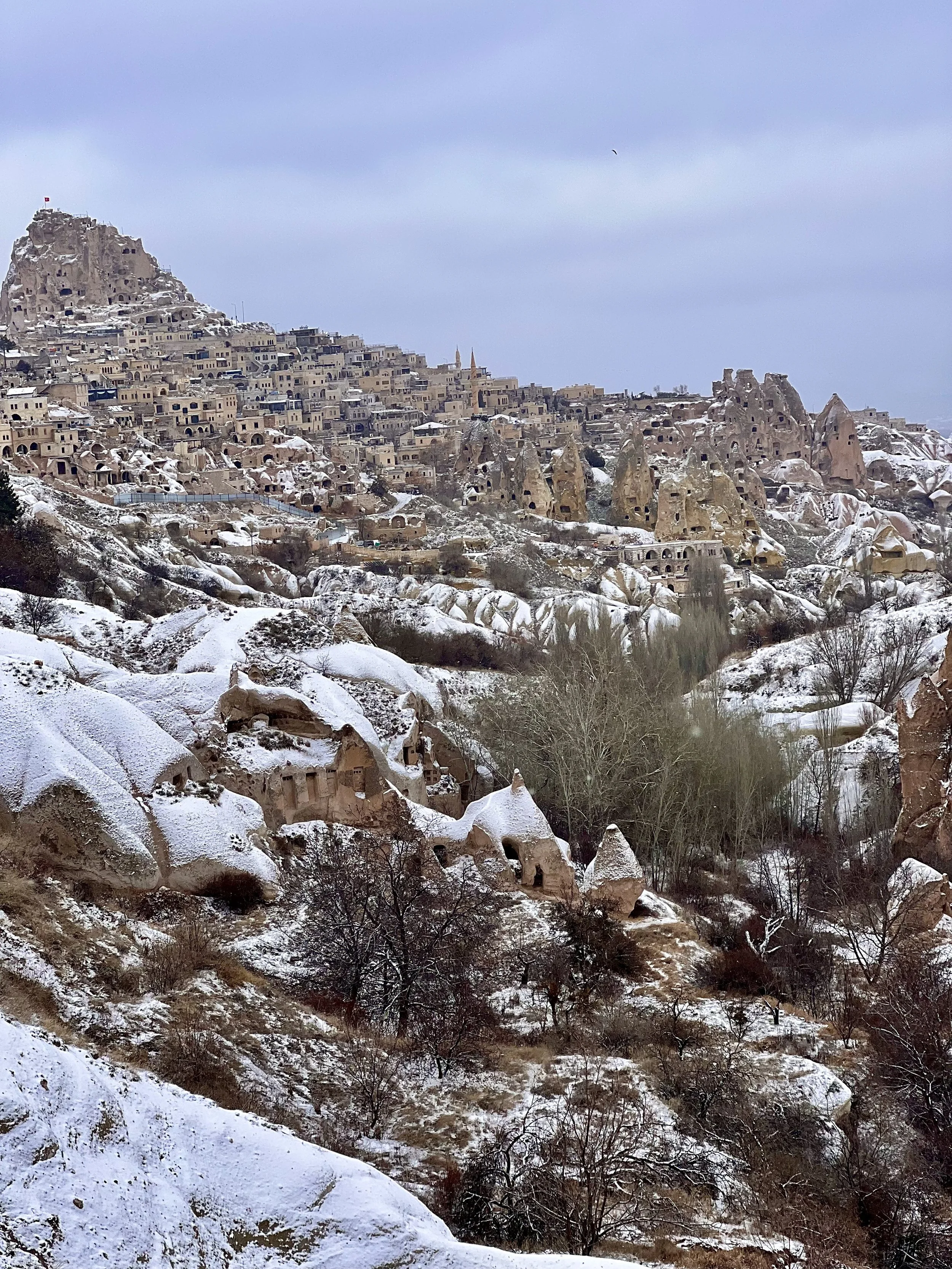The Land of Fairy Chimneys & Caves - Cappadocia
Have you ever wanted to stay in a place where you can sleep in a cave with heated floors and a bath tub, explore ancient underground cities, stare at fairy chimneys (or whatever you are inclined to call them), hike 10 miles a day, consume incredible food, play with kittens, and feel like you are in a Star Wars movie? Well, I’ve got the place for you.
Made famous for its for its unique rock formations – referred to as either “fairy chimneys” or “phallic pillars” – and hot air balloons, Cappadocia truly feels like another world. Formed 60 million years ago by erosion of soft layers of lava, this region was once the heartland of the Hittite Empire and also gave rise to some of Christianity’s earliest followers. In fact, houses and churches carved into the caves and rocks turned this area into a huge safe haven for Christians escaping persecution from the Roman Empire. Its name stems from the Persian word Katpaktukya, which means ‘the land of beautiful horses.’
Cappadocia is now one of the most popular destinations in Türkiye. Although I was hesitant to visit during the winter months, it was pure magic. I caught the very first snowfall of winter, which dusted the landscape with a beautiful layer of white and made the whole place feel enchanted. I wasn’t able to see the famous hot air balloons dotting the early morning sky (they were cancelled due to weather), but prices were much lower than the summer months and I was able to beat the hoards of tourists. It felt like I was in a winter wonderland all on my own. No matter what time of year you go, this is an absolute must see in Türkiye.
Where to Stay in Cappadocia
I made the mistake of assuming Cappadocia was a city – which, it’s not. Cappadocia is a large region that touches many Turkish provinces. There are several areas you can stay when visiting the region, but the towns of Göreme, Ugrup, and Uçhisar are the most popular locations, offering plenty of hotel options and the best views of the famous sunrise hot air balloons. However, each area has its pros and cons, so I’d recommend doing your own research to figure out what works best for you. The region is known for having “cave” hotels, meaning you get to stay inside of a cave that has been converted into a room filled with modern amenities, such as heated floors. It’s a unique experience perfect for a romantic getaway, a solo trip, or an adventure with your best friends. I chose to stay in Göreme based on it’s location and accessibility to local hikes, and was not disappointed.
Sato Cave Hotel
Sato Cave is a newly renovated hotel in Göreme that was recommended by a friend. Although they do not have a website yet, they make it easy to communicate through WhatsApp and their Instagram page. I had an incredible stay in the Arena Stone room, which had its own bathtub and heated floors. It was also one of the most well priced places I found in the area. Although they do not have a pool, they still have a great view of the city and served the most incredible Turkish breakfast on their rooftop terrace. I would recommend staying here before it gains in popularity – it’s definitely a unique gem. The staff was exceptional and helped me book a guided tour of the region called the “green tour,” which included a visit to Derinkuyu Underground City, Selime Monastery, Pigeon Valley, and a walk through Ihlara Valley (I go into more detail about each of these below). Overall, the hotel felt like a little hidden sanctuary. I would definitely stay here again.
Aza Cave Hotel
I also spent one night in Aza Cave Hotel. While it didn’t have the same authentic “cave” like feel as Sato Cave hotel, the room felt a bit more modern and the hotel had a seasonal outdoor swimming pool, garden, and a shared lounge and terrace. Breakfast was served inside of the well known Seten Restaurant, which offers an incredible breakfast alongside one of the best views of the hot air balloons rising over the city – reason enough to stay here if visiting during the summer season.
Hiking in the Cappadocia Region
There are so many trails in the Cappadocia region, making it a dream for a nature enthusiast like me. Everywhere you turn, you’ll see something that will take your breath away. Hiking in winter was a bit tricky since I didn’t have the appropriate clothing, but I still managed to cover about 20 miles. I found myself completely alone – which was equally unnerving and magical. There are dozens of offshoot trails which makes it really easy to get lost, so make sure your phone is fully charged, you have a map downloaded (I use AllTrails), and your backpack is filled with plenty of water and snacks.
Below, I’m sharing the two hikes I did while staying in Göreme, but I would recommend only doing one of the two. Both trails take you through Rose and Red Valley, but the difference is that one is slightly longer and harder than the other. I was limited in what I was able to do because of the weather, which is why I stuck to the same area. However, there are dozens of hikes in different valleys worth exploring. If you are interested in a more in depth guide to hiking in the region, check out this blog. I personally would have loved to do Love Valley (Aşıklar Vadisi) to Uçhisar Castlen and a hike in Pigeon Valley.
Rose and Red Valley Hike
I did this hike the first day I arrived, prior to there being any snow on the ground. It’s a great introduction to the valley and a fairly easy hike. The trail has a number of historic churches, passes through tea gardens where you can get a refreshing beverage and take a rest, and also has great views of the Göreme area. As I mentioned, it’s easy to get lost and the trail is a bit confusing, so make sure you have a map downloaded before you go. I always use AllTrails – you can find a link to the hike here.
Distance: 4.8 miles, but add on another mile if you are walking from Göreme
Elevation: 850 feet
Time: About 2 hours to complete, but I’d give yourself 3. You want ample time to explore and enjoy yourself
Göreme Loop
This loop is definitely more challenging than the one listed above, but it was my personal favorite. The last half has a few ladders and ropes to climb, which makes it feel more adventurous. I did this hike in the snow which was incredibly fun, but also a bit dicey and not something I’d recommend when traveling solo. This trail takes you through the same scenery as listed above, but you also get better sweeping views of the valley as you climb even higher. You can find a link to the hike on AllTrails here.
Distance: 8.5 miles, but add on another mile if you are walking from Göreme. This hike was about 11 miles total for me, but that’s because I went off trail quite a bit
Elevation: About 1,600 feet, so nearly double the elevation of the Rose and Red Valley Hike
Time: About 4 hours to complete, but give yourself a little bit more time to explore and rest
Underground Cities
There are more than 200 underground cities in Cappadocia, which is absolutely mind boggling. These cave-cities were built by the Hittites, an ancient Anatolian (modern-day Turkey) people who formed an empire between 1600-1180 BC. The underground cities were expanded by early Christians over the following centuries, who used the network of caves to hide from invading armies. The deepest of all the cave cities is Derinkuyu, which was discovered underneath the kitchen of a villagers home in 1963. The city has more than 8 levels (like I said, absolutely mind boggling!) and has wineries, stables, bedrooms, food storage units, kitchens, ventilation shafts, water reservoirs, schools, animal stalls, a series of tunnels, churches, and even a graveyard. It’s an absolute must see in my opinion, although I would not advise visiting if there are crowds or if you are claustrophobic. This was part of the “green tour” that I booked through Sato Cave Hotels, and I would definitely recommend going with a tour guide so that you can hear more about the history of the underground cities in detail.
Selim Monastery
Selime Monastery is the largest and most elaborate cave complex in Cappadocia. Built in the 8th or 9th century BC, it took over 200 years to complete the monastery, which is thought to have been able to house about 5,000 people. Inside is a cathedral sized church, where you can still see many of the original frescoes painted on its walls and ceilings. There are also camel stables, living quarters, a missionary school, water well, and a huge kitchen with a chimney. In the 10th and 11th centuries, the Monastery became a refuge for travelers and tradesmen who were journeying along the silk road. It was as if you could feel the history of the place seeping through the walls – it simply took my breath away.
Pigeon Valley and Ihlara Valley
I really enjoyed getting to see Pigeon Valley and Ihlara Valley as part of the “green tour.” Ihlara Valley is close to Mount Hasan and Mount Melendiz, which are two of the three volcanoes in Cappadocia. Ihlara Valley was formed by the Melendiz River thousands of years ago and is several hundred feet deep. According to my tour guide, it is believed that the valley use to be home to thousands of people who lived in dwellings carved into the caves, which you can still see today as you walk alongside the river. Ihlara Valley is quite far from Goreme, so this tour was the perfect way to see it.
Pigeon Valley earned its name from thousands of man made “pigeon houses” carved into the rocky landscape. Pigeons were used in ancient times in Cappadocia to carry messages between regions. In addition, farmers use to collect pigeon droppings, which are extremely rich in nitrogen and apparently an effective fertilizer for farming Cappadocia’s volcanic soil. Pigeon Valley is close to Göreme, and you can easily explore the area on your own as well.

